To all my readers who have been anxiously waiting for new updates (hello, dad and brother!), I'm still here and finally ready to talk about my latest photo explorations.
It's definitely not for lack of activity that I haven't posted in a while. In fact, since my last post here 1½ months ago, I have taken more than 1000 pictures! Of course, 90% of them will never go any further than my hard drive, and the amount of pictures may sometimes be more an indication of not really knowing what I'm doing than a burst of brilliant creativity.
So this is the first step in attempting to catch up with everything that has happened since I bought the new camera. For that I have to go all the way back to April 10 and a beautiful vacation day that was just perfect for taking pictures, with just the right mix of clouds and blue sky, and temperatures that were finally bearable after a long cold, gray winter.
So I took my bicycle on the train and went all the way to the Copenhagen Airport metro station. No, I didn't get on a plane to Iceland or anything fancy like that. Instead I jumped on my bike and rode down along the coast, passenger planes passing right above me at low altitude for their runway approach. And yes, of course, I did stop to take pictures of them, with the Öresund Bridge, between Denmark and Sweden, in the background - a recurring ingredient throughout the day, it turned out.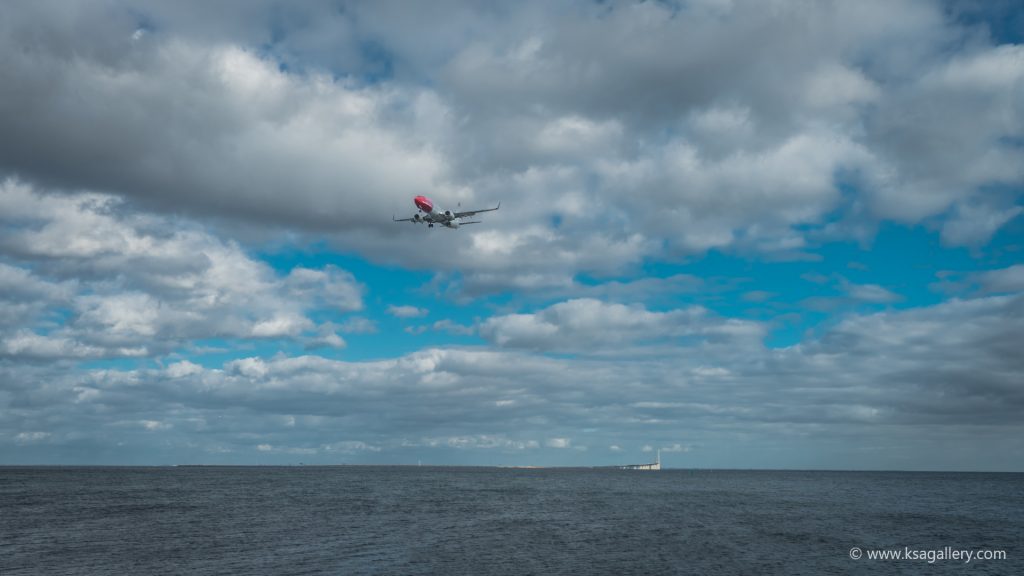
My target for the day was actually not the airport, but the village of Dragør, a small town south of Copenhagen strangely unaffected by the presence of Scandinavia's largest metropolis just a few kilometers to the north. In order to get there, I had to follow a bike path along Amager Strand, a beach area that I hadn't really given much thought during my planning. But as it turned out, the beach area was a scoop in its own right.
Now, by all measurements Amager Strand is probably nothing special - just a typical Danish beach - but 1) since I don't get out much, and 2) since I see everything with new eyes after I got into photography, to me, Amager Beach was a revelation. I was awestruck by its beauty and briskness, and I knew Dragør would have to wait a bit as I carpet-shot the area with my Sony A7 II.
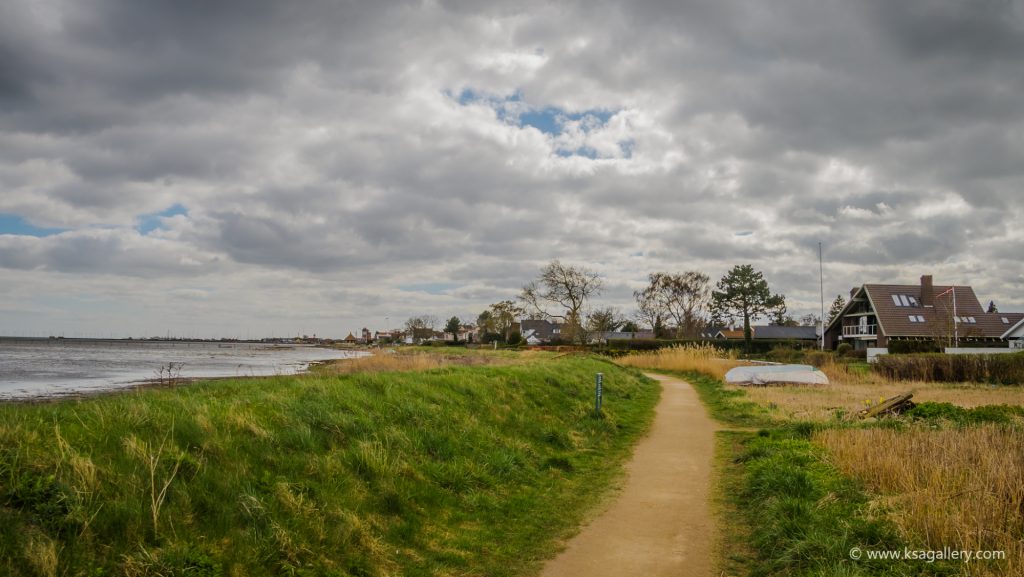
One of the most interesting features of the beach was a number of narrow docks stretching far into the water, a perfect opportunity for photographers such as myself looking for leading lines. The below image was one of the first of many, many that I took of this phenomenon and probably the best. Possibly because it was the only one I managed to take using a bit of long exposure. See, while I deliberately hadn't brought my tripod (it would have been too clumsy to carry it on my bike), I did bring my beloved Platypod, figuring that would be enough. And yes, it would have been enough if it hadn't been for the fact that you can't use a Platypod without your ballhead. And where was my ballhead? You guessed it: still attached to my tripod 40 kilometers away at home.
So what I did for this image was to put the camera on top of my backpack to elevate it just a little from the boards. But while I did get this shot in the bag, a backpack just doesn't cut it so I quickly reverted to hand-held.
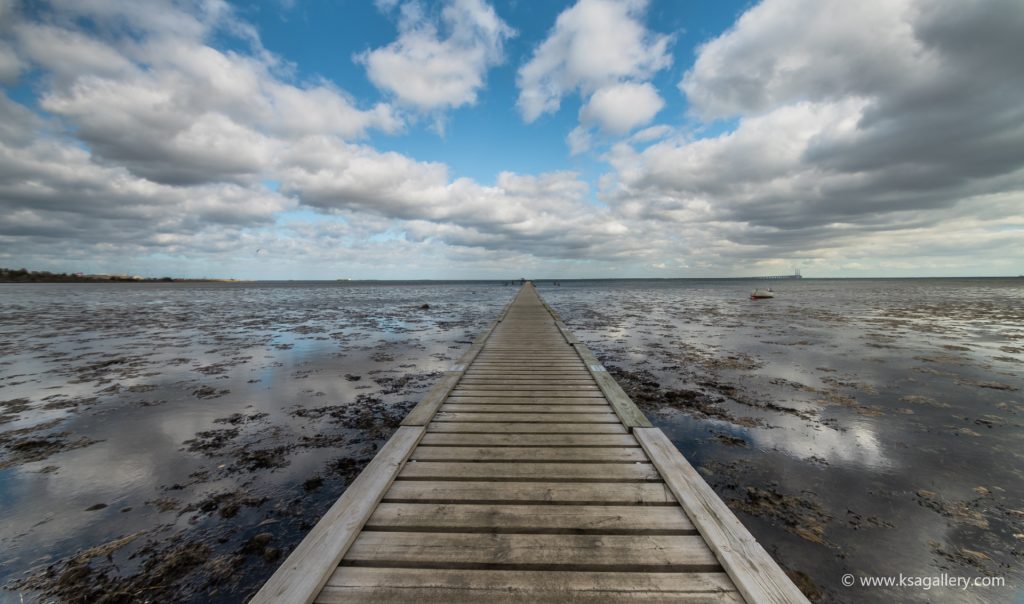
This next image is one of my favorites of the day. I like its simplicity and balance. I can only imagine the scene during a sunrise. That's for another time.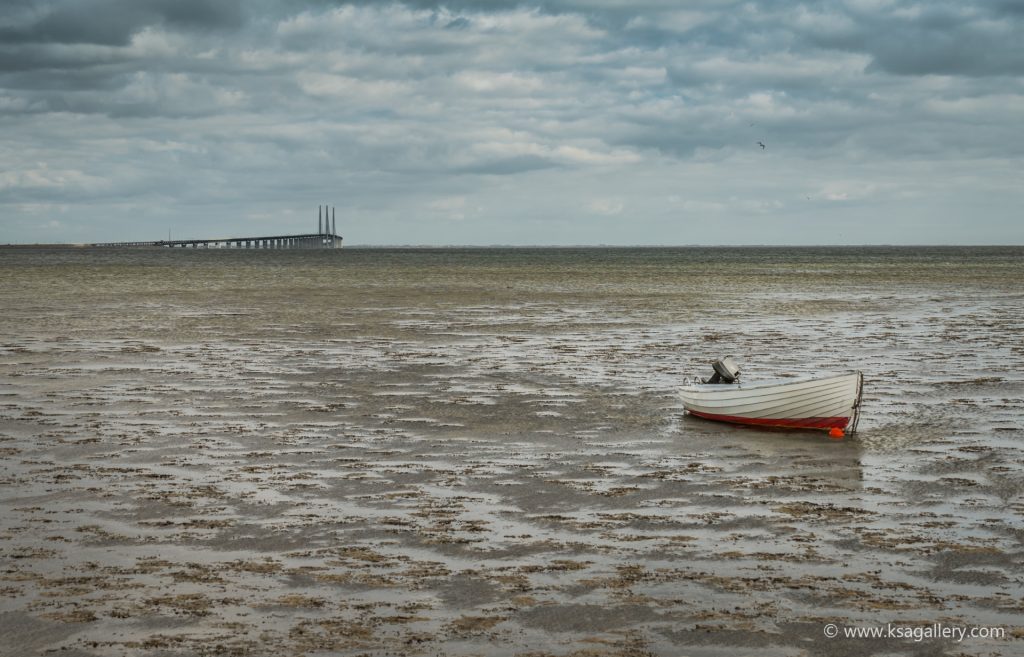
As I roamed the beach, planes kept coming in. When one had touched down on the landing strip beyond the dike, the next one would appear in the sky for its approach. I took dozens of pictures of planes. Most of them are useless because, although the planes came in low, they still appear rather tiny in the pictures - unless you crop them really tight, in which case they were just rather bland pictures of airplanes, and you missed the scene with the bridge in the background. This is where a monster zoom lens might have done wonders, but oh well.
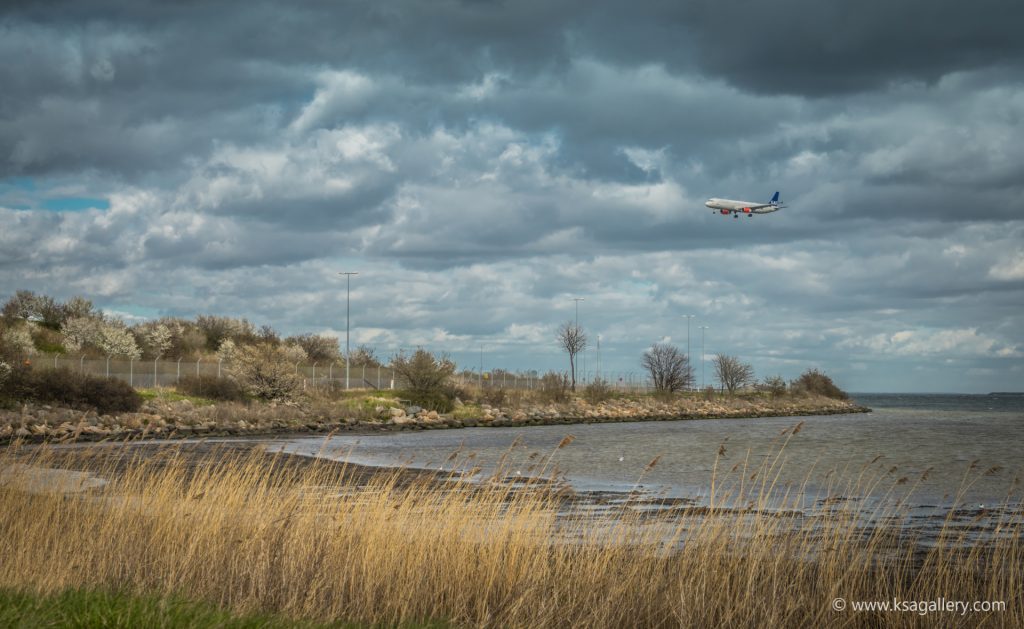
Well, I finally reached my destination, the town of Dragør, famous for its yellow thatched-roof houses such as this one in the image below. Entering the village, you feel like you are stepping 100 years back in time.
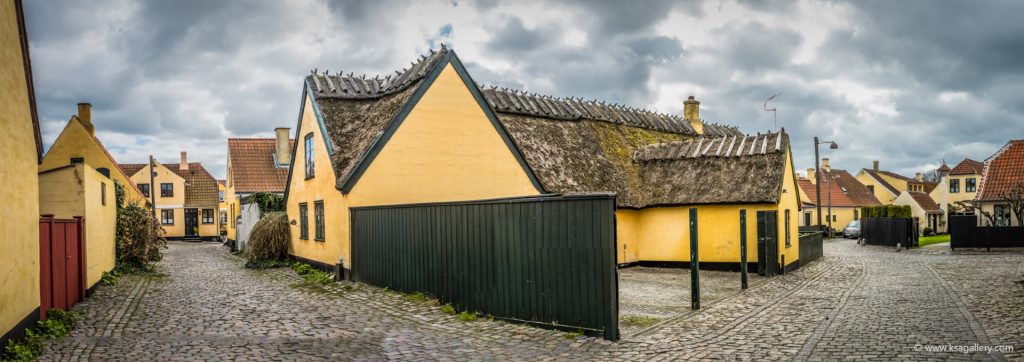
It didn't hurt that, just as I was walking down the street, a crack opened in the clouds and allowed rays of sunshine to shower the houses in the kind of light that makes a photographer's arm hairs stand up.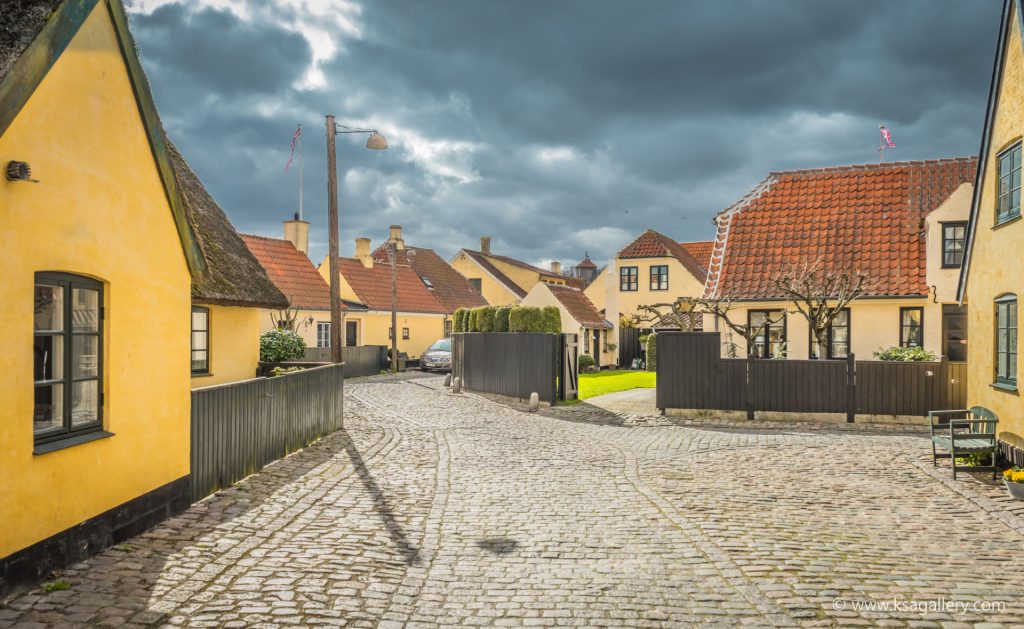
After walking around town for a while, I spent some time at the local marina. I included a picture of that in my last post, so here instead is another one I took there of two seagulls chasing each other.
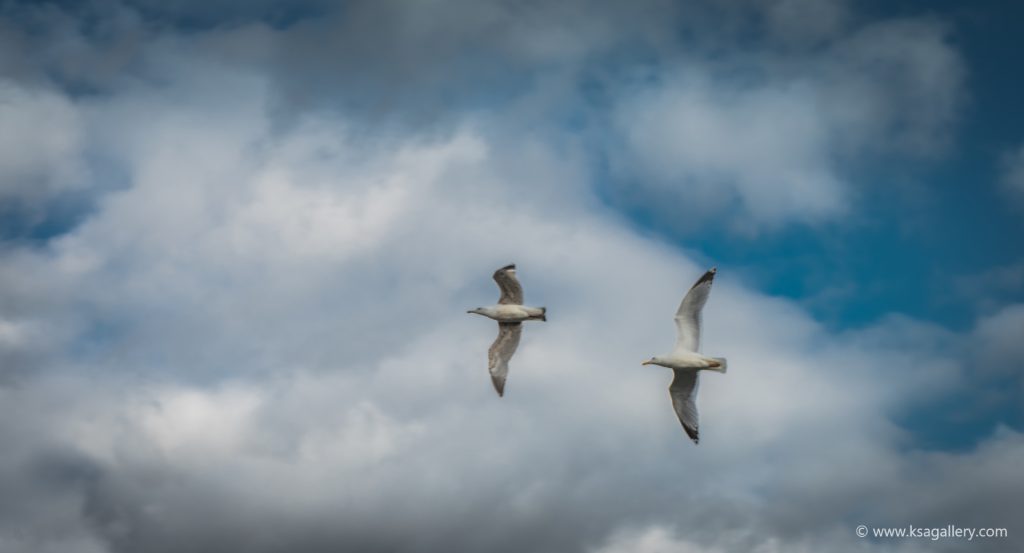
My day of shooting was coming to an end. I fought my way back to the airport on my bicycle with a head wind that felt like a cyclone, but I had enough energy to capture this stitched panorama of Terminal 3 that I was quite pleased with.  I actually captured in the neighborhood of 400 pictures on this day alone. It seemed like every way I turned, every airplane I saw, every building I passed was an opportunity that couldn't be missed. I ended up with a ridiculous amount of very similar pictures with only a few great ones. In hindsight, I regret not using the zoom lens that I do have (270 mm), but then again, that would have required a tripod... and a ballhead.
I actually captured in the neighborhood of 400 pictures on this day alone. It seemed like every way I turned, every airplane I saw, every building I passed was an opportunity that couldn't be missed. I ended up with a ridiculous amount of very similar pictures with only a few great ones. In hindsight, I regret not using the zoom lens that I do have (270 mm), but then again, that would have required a tripod... and a ballhead.
In the last few months I've been feeling a growing itch in my body. I've been feeling that I had somehow hit a wall with my photography. While my eye for a good motif, and my ability to capture it, kept improving, my camera was becoming the weak link. I felt that even when I did everything right, using the right exposure, the right aperture, a tripod, etc., the technical quality of my pictures - especially in low-light scenery, left a lot to be desired. I started to look for a new lens, but realized my camera's A-mount system was an obstacle. The selection of A-mount lenses just isn't very good. Besides, my old trusty Sony A33 increasingly started to feel like a beginner's camera. I felt I had moved on from the beginner stage.
To make a long story short, I itched for a new camera. I knew it had to be a Sony again, but with the more future-proof E-mount system that would, at the same time, allow me to reuse my old lenses with an adapter.
After pretty thorough research - and with the advice from my more technically adept brother - I chose a Sony A7 II. While by no means Sony's top model, it has all the qualities I can realistically hope for with my budget. And with the right lens, there's no reason I shouldn't be able to take pictures that until now I could only dream of.
The right lens, however, is still a thing for the future. My economy can only take so much camera equipment in one month... possibly year. So for now I have to make do with my old lenses and the generic lens that came with the camera. And that's ok. There are plenty of new features in the camera itself that should help improve picture quality even with the old lenses. A lot of that, however, takes practice and studying, something I haven't done much of yet. So in my first few weeks of using the camera, I can't say that I have utilized its more advanced features much, just as I haven't pushed it to its limits by doing much low-light photography or other challenging exercises.
Still, the following pictures, all taken with the new camera and with the included lens, show a lot of promise of what it's capable of.
The first one is a well-known motif: Frederiksborg Castle, a stitch of six handheld images. Nice, sharp, and crisp.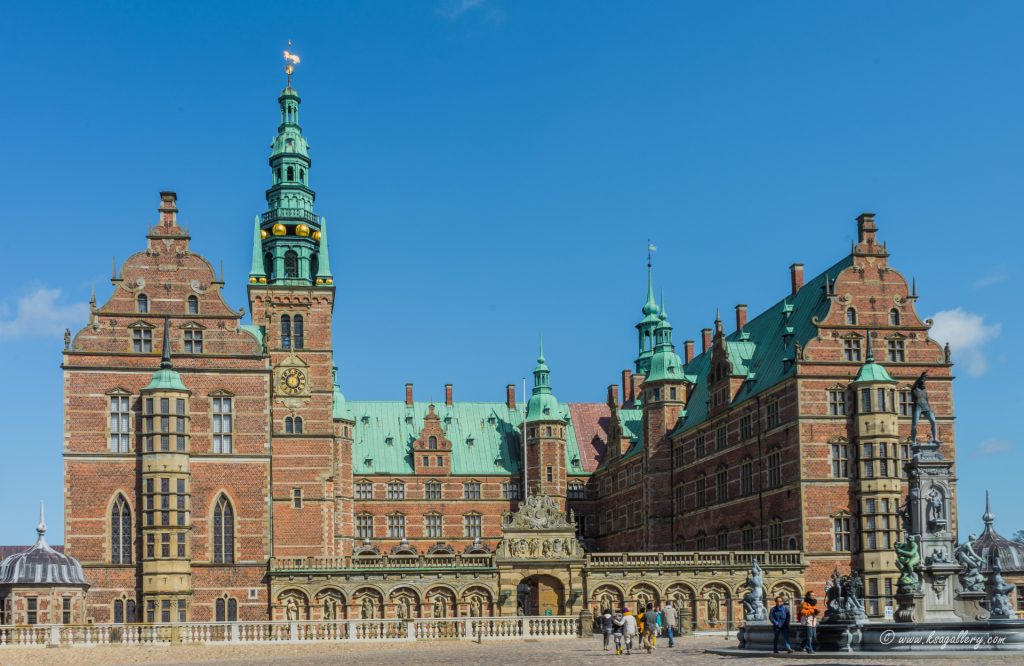
Seagulls at the harbor in Dragør during a photo excursion that I hope to write a separate post about soon. I wish the background of this shot hadn't been so messy, but I'm happy with the sharpness, achieved at only 1/160 second, in a burst of shots that made the memory card stumble to keep up.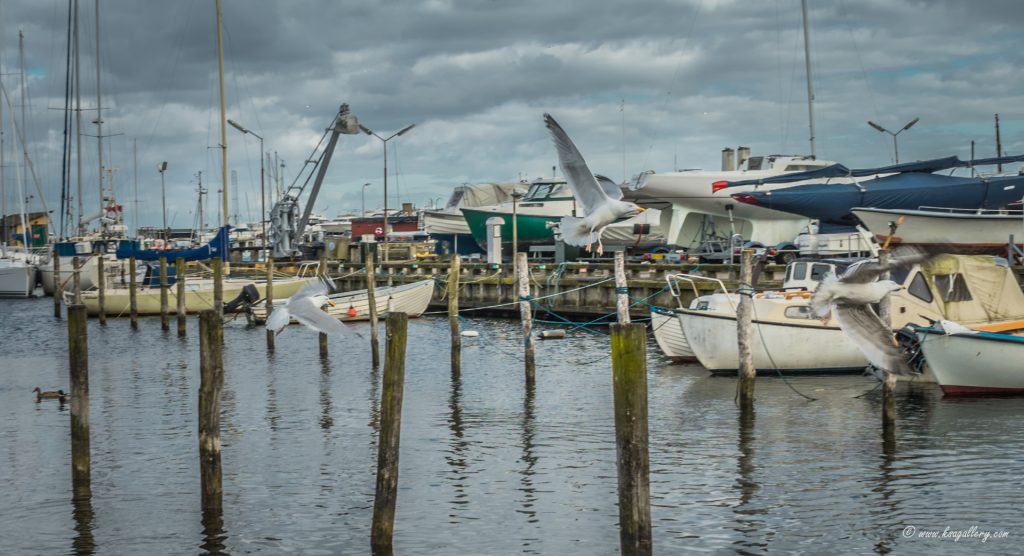
Another personal favorite of mine from my trip to Dragør. Again, notice the lack of blur, particularly in the waving flag. And boy, was it windy that day.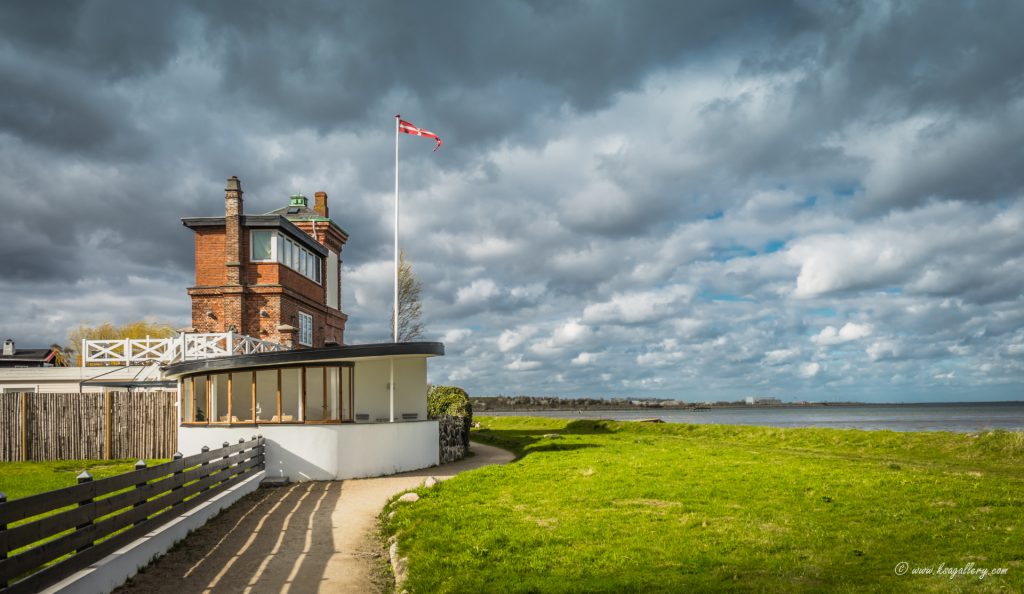
The only non-handheld picture of the bunch, and again from my Dragør expedition. That's me testing the app that comes with the camera and that turns your smartphone into an advanced remote control. Awesome! I always had trouble with remote controls for my old camera. This new smartphone system just worked. And the picture? There's a crispness about it that I just don't think I could have achieved with my A33.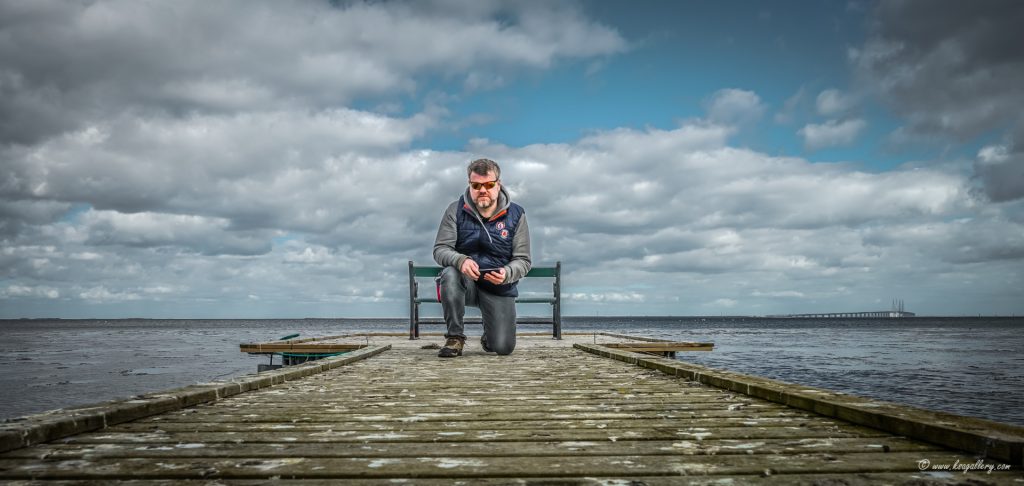
Next is my only attempt at low-light photography so far. Just the view from my backyard captured with a handheld shot at ISO 320 and 1/60 second. I think this demonstrates A7 II's anti-shake qualities in a big way. And the noise? There was none detectable. Definitely an improvement over my old A33.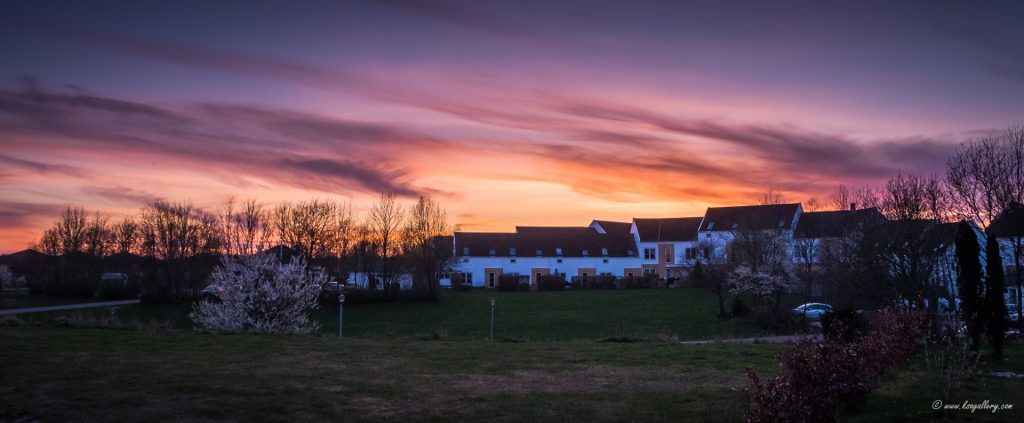
A picture of our neighbor's beautiful cat Ollie. Here I have experimented with A7's manual focus, adjusting the focus to the cat's eyes, something that wasn't even possible with my A33. Yes, I admit, I enhanced the eyes in post-processing, but still...
One of my favorite pictures that I have taken so far, not just with the new camera, but... like... ever. I don't know if it tells a lot about the camera, but I'd like to think I couldn't have achieved quite the same result with my A33. All I know is that I had to include it here because I just hit the nail on the head with this one, if I say so myself.
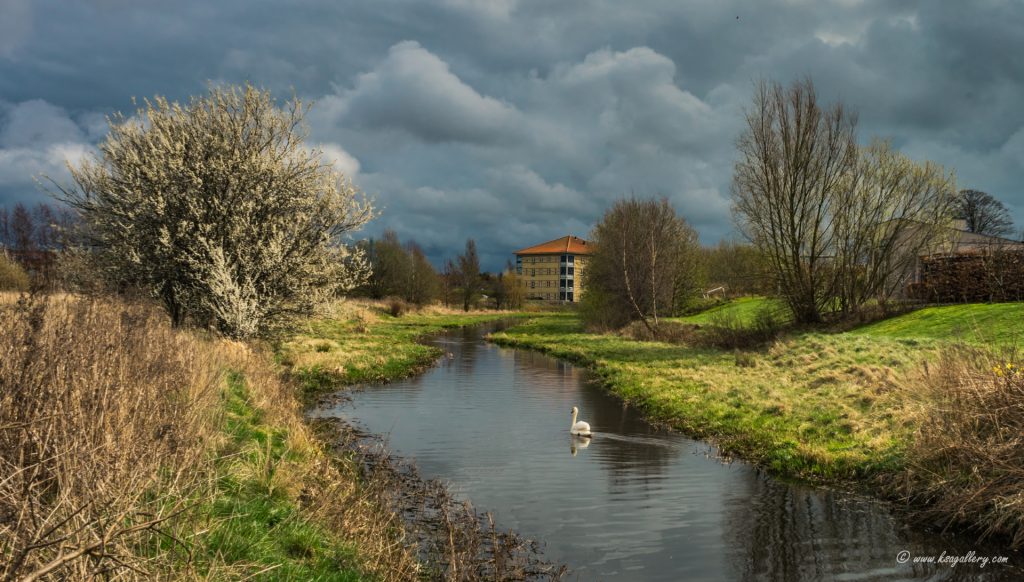
Well, the days are getting longer, the beech trees will explode in green within a few weeks, life is returning to nature, people are coming out of their houses, and I will be there to document it all with my A7 II. So keep an eye on this spot. I can feel this will be an extraordinary photo year.
Iceland is all landscape photographers' dream travel destination, and back in September I was fortunate enough to spend all of 20 hours there in connection with a return flight from the US to Denmark.
The deal with Icelandair was the following: get an insanely cheap flight to US and in return spend a little time - and money - in our beautiful, volcanic country. I figured, why not? I knew that whatever I saved on the plane ticket, I'd probably spend in Iceland, but the prospect of getting to shoot some of the most fascinating landscapes in the world intrigued me.
So after a little research I booked a six-hour bus tour covering what's known as The Golden Circle, the southwest corner of Iceland where spectacular scenery is as plentiful as it is accessible. I was ready.
I arrived in Reykjavik at 6 o'clock in the morning on September 20 2016 after a seven-hour flight from Seattle. Having been unable to sleep on the plane, I was beginning to have some slight doubts about this whole endeavor. It didn't help that I had six hours to kill before the bus tour even started, 50 minutes of which were spent on a shuttle bus going from the airport into the city of Reykjavik. A lot of the landscape that we passed on the way looked rather bleak, to put it mildly. The clouds were almost as black as the volcanic soil. Even the rays of sun seemed hostile, like big, extra-terrestrial search lights sweeping the ground looking for surviving humans.
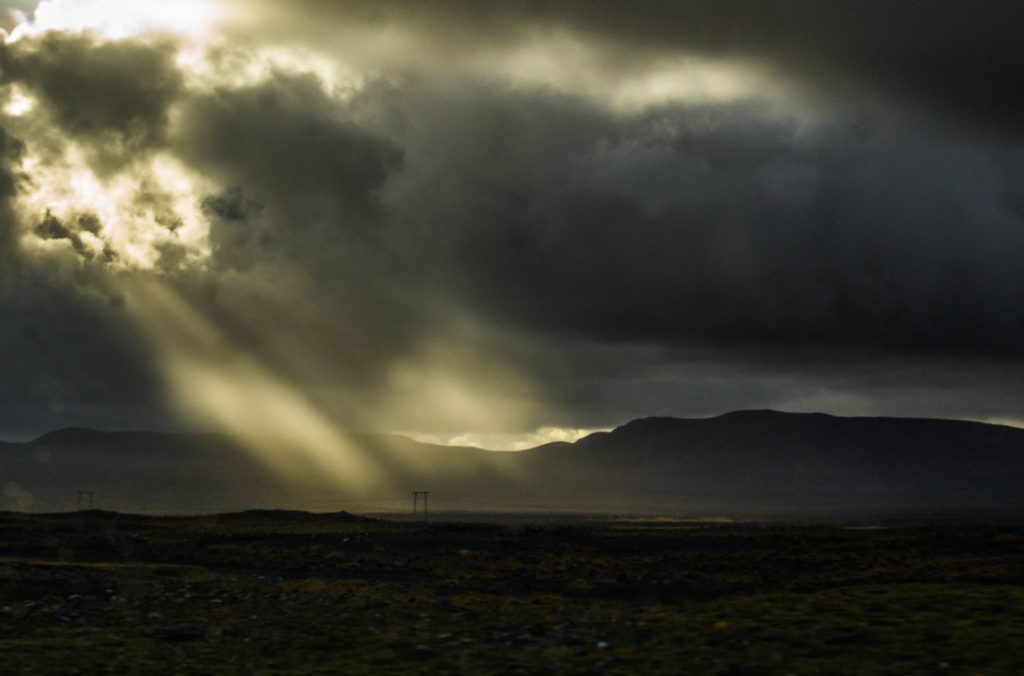
Was this dark, bare landscape really the magical Iceland I had heard so much about? At this point I wished I'd just spent $200 more on that plane ticket and gone straight home to my warm, Danish bed.
Well, it was too late for regrets. I had to make the best of it. That included walking a couple of kilometers from the bus depot to downtown Reykjavik. If the country had indeed been taken over by aliens, a good bet was that their overlord could be found inside that dome in the background of the below picture.
I didn't go to find out, but continued the opposite direction and, with the help of Google Maps, soon made it to the city center. Reykjavik is much bigger than I imagined and seems to be going through both some serious growth and an architectural update, including the brand new city hall as seen here:
After a 30-minute pit-stop at the local public library (always to the rescue when you most need them), I was ready for a little more exploration and found my way to a park rising above downtown and offering this view of the harbor and the new performing arts center Harpa.
Then the rain started.
It had been threatening to rain since I'd left the airport. I had felt plenty of drops and hoped it wouldn't amount to more than that, but as I continued my walk through the city, the rain started pouring from a steel gray sky from which the dots of blue and rays of sunlight had now completely vanished. I had to find refuge in a covered bus stop and sat there shivering with cold for an hour while bus passengers came and went. The fact that I didn't take a single picture of life buzzing by on this busy Reykjavik street tells you all about my state of mind. I was hungry, tired, wet, jet-lagged, sore, and just plain miserable.
Finally, the time came when I had to go to the pick-up place for the Golden Circle bus tour. A small shuttle bus took me back to the bus depot where the actual bus departed from, and we were on our way. When I say "we" I mean myself and about 10 other tourists, the driver, and a male guide who, in his own quiet, understated way, entertained us with jokes about volcanic eruptions and all the other hard conditions Icelandic people had to endure.
The first part of the tour went through some more bleak, and yet fascinating landscape, where overland pipelines transporting thermally heated water criss-crossed the treeless hills, and electric powerlines towered above us like deadly steel triffids.
Things became a little more hospitable when we picked up two more passengers at an idyllic horse breeding ranch. The stumpy, long-haired, and extremely tough Icelandic ponies are one of the country's primary exports, and they supposedly cost fortunes.
The first real stop of the tour came after about an hour's drive (during which I think I dozed off for a few minutes, the first sleep I'd had in close to 24 hours). It was the famous Haukadalur geyser area where a geyser named Geysir actually gave name to... well... geysers.
Although I have experienced geysers several times in Yellowstone National Park, steaming water shooting out of the ground will always be one of the most awesome natural phenomenons you can witness. A short let-up in the rain even made it possible to get some decent pictures, and unlike most geysers in Yellowstone, here you didn't have to wait hours, days or months for an eruption. This particular specimen knew how to please a crowd and released its load of boiling water every 10-15 minutes.
Before the next stop, we passed through a landscape that was turning more and more breathtaking. There were no huge mountains chains on the horizon - in fact, in places it was almost flat - but rivers and creeks were everywhere, framed by lush green colors and this characteristic soft icelandic light that despite the cloud cover still felt quite tangible.
Having not really studied the Golden Circle in advance, nothing had prepared me for what came next. Sure, the guide talked about a waterfall. I knew waterfalls. I'd seen tons of waterfalls two weeks previously in Canada. They didn't come much better than that.
Except, they did. After a short hike from the parking lot, what revealed itself in front of me was one of the most magnificent sights my eyes had beheld in my 47 years on Earth: a waterfall the size of a 10-story apartment block. All the fatigue, misery, and pain that the day had been so full of vanished in a split second, and all I could think of was how to capture this natural wonder with my little, utterly insufficient piece of man-made technology called a camera.
You'd think the Gullfoss waterfall would be a slam dunk, but to be honest, while I'm fairly happy with the result, it does not tell half the story of what it was like to stand there. You don't truly sense the sheer magnitude and power of all that water roaring through the canyon.
Part of the problem was not my photography skills, but the fact that the surrounding landscape was so bare. The waterfall was all there was. There was nothing to put in the foreground, nothing that could work as a scale indicator, and no sunshine or sunset to enhance the colors.
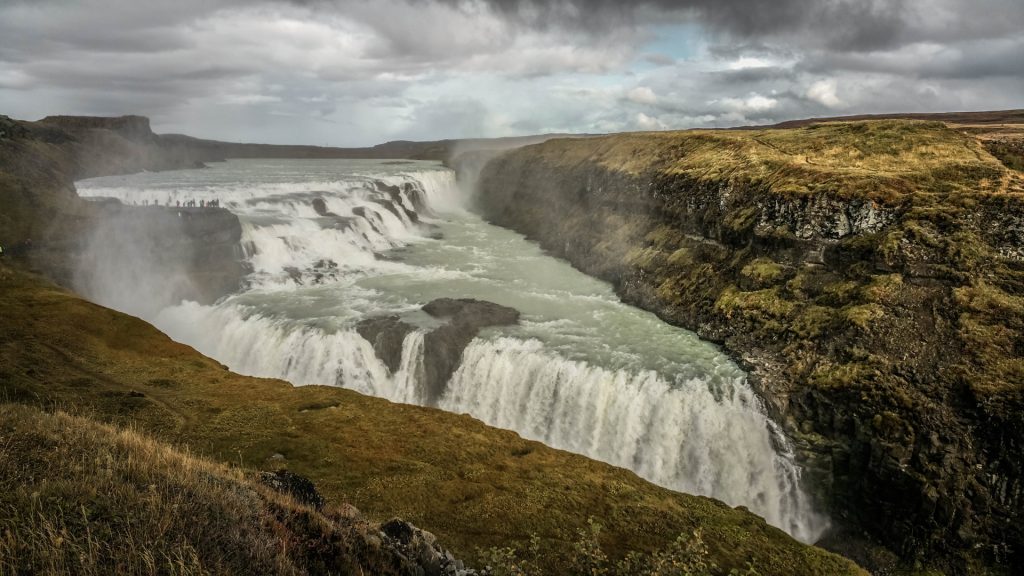
Perhaps my best capture of the Gullfoss waterfall is actually the stitch of 2-3 images, which is what you see below. I had followed a trail down to the top shelf of the waterfall where I snapped several images, including a few long exposures. My tripod was safely packed in my checked baggage at Keflavik Airport, so I had to place the camera on the rocks and use a 2-second shutter delay.
Another challenge was that the rain was starting to pick up again and that we only had about 30 minutes before departure. So I worked fast and frantically to take all the pictures I could, using two different lenses, two different cameras (my cell phone being the other one), and all kinds of settings to cover all my bases. I was actually surprised and proud of myself for not screwing things up and dropping a lens into the raging river. The last few years of frequent picture-taking has paid off. I know my camera and can almost work it in my sleep, even when things get hectic. This next picture tells you all you need to know about the conditions I was working under.
As it turned out, I was back on the bus before most everyone else, but I was happy and elated and knew I'd done what I could under difficult circumstances. I also knew that no matter what had happened earlier in the day and what would happen from then on, my Icelandic detour would have been more than worth it.
When we arrived at the last stop an hour or so later, it wasn't just raining. It was pouring. Hard. I put my camera under my vest and walked with the rest of the party up to where the tectonic plates of Europe and North America happened to meet. Or rather, separate. It was also the location of an ancient viking parliament where the earliest Icelanders met to make decisions or put criminals to trial.
Under normal circumstances my camera shutter would have been working non-stop to capture every detail of this historically and scientifically significant spot. But the pouring rain meant I could only get the camera out from under my vest for a second or two at a time, or just enough time to point and shoot. It's a miracle I got any useable pictures at all.
The below image is the actual rift between the two continents. In some places it's no wider than you could stand with a foot in both Europe and North America.
While not a photographic highlight of my Icelandic adventure, the visit to Thingvellir, as the area is called, was still a mindblowing look into the past, both geological and historical. Moreover, it was a perfect end to a bus tour that, at one point I wished I'd never booked, but very soon realized would be an experience of a lifetime.
At this point I packed my camera away. I did take a couple more pictures with my cell phone on the way back to Reykjavik, but nothing spectacular. Back at the bus depot, I had to wait a couple of hours for my ride back to the airport.
After arriving at the airport, the rest of the evening until my 1 a.m. flight was spent picking up my luggage from the storage place a kilometer from the airport terminal (a distance I had to walk to and from in more pouring rain), queuing up in the only passenger queue I could find (the wrong one, it turned out... all the German voices should have tipped me off), walking what felt like three miles through the airport to my gate (I'd always thought Keflavik Airport was fairly small... boy, was I wrong), sitting in a chair at the gate for two hours unable to sleep, then lining up to board the plane only to be told it would be 30 minutes late, and then finally, FINALLY dropping into my plane seat after having walked 20,000 steps and been awake for about 35 hours.
I may have dozed off for an hour or so during the flight, but I would not get any real sleep until I was all the way home 5-6 hours later, more dead than alive, and the last 40 hours seeming like a dream - except, I had the pictures to prove that it happened.
The other day I mentioned how depressing and uninspiring our current weather is. It's all a gray mass of gray and has been so for weeks. This is actually one of the reasons we survive the short days here in the Scandinavian hemisphere: nightfall at 3:30 in the afternoon is a relief compared to the gray mush we spend the day in.
Anyway, needing some exercise today and with no intention of turning it into a photo excursion, I saddled my bike and rode into the grayness, armed only with my cell phone. But of course, I had not gone for more than 10 minutes before I caught sight of the most beautiful and depressing abandoned... well, actually, I don't know what it used to be, but anything abandoned is worth a picture, so off the bike I hopped and used my cell phone to capture the below likeness.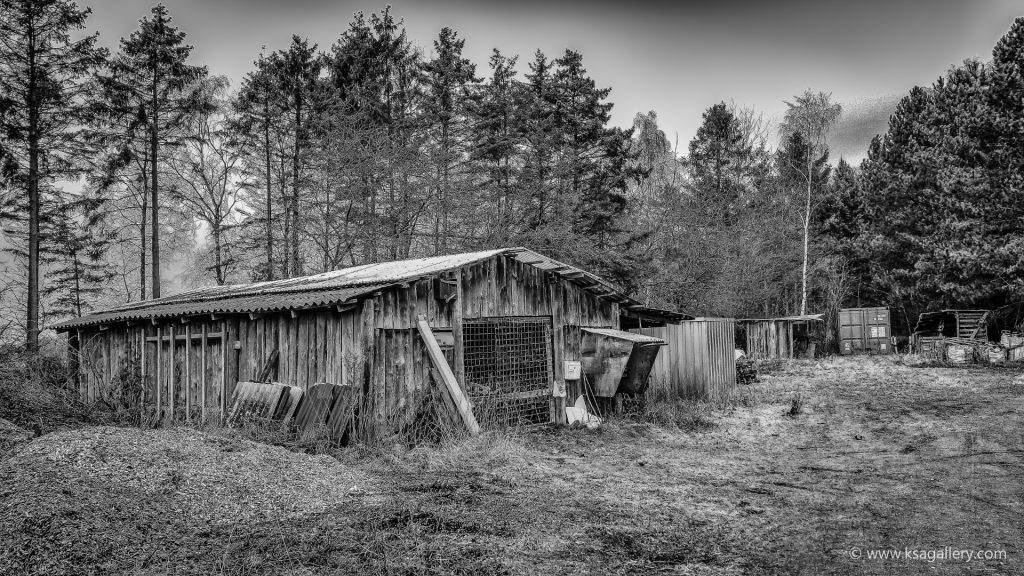
Sensing that all the grayness might be negotiable after all, it wasn't long until I came upon my next suitable motif. A flat, depressing, gray, dreary, and did I mention, gray, field of grayish brown soil, broken only by a string of bare, cold, industrial power poles. This is as gray and boring as it gets, so I figured I'd capture it if only to show you what you're up against in this country. However, while this is by no means a masterpiece, I felt that the spot actually had some potential, so I plan to return in the spring and see if I can capture a nice sunset here.
For the next image I once again had to rely on black and white to make it interesting. This may be my favorite shot of the day, but only after I took it through my Silver Effects Pro plugin.
The colors return for the next one, as the flock of geese taking off from a field makes up for an otherwise depressing scene of gray Danish flatness. I was lucky too, as a lone car passing by stirred up the birds enough for me to capture this pretty scene. A few pictures taken moments before this one, just showed the birds standing around doing nothing.
Finally, an attempt at mimicking Flickr star Nick Brundle whose favorite subject seems to be rolled up hay bales. I'm not quite at his level yet, but I was rather pleased with this one and its simplicity.
Well, while January and February will never be my favorite shooting months, I guess I got a little bit of confidence in myself today that you can in fact get something worthwhile out of the gray, light-deprived mush that we call winter around here. If nothing else, I got some much-needed exercise, covering more than 15 kilometers on my trusty iron horse.
This blog is mostly an opportunity for me to show off my best work. For every picture I post here, I have 200 that are not as good. But this time I'm going to talk about my annual failed attempt to take pictures of the New Year's Eve fireworks.
Since getting my Sony A33 camera six years ago, on most New Year's Eves I've gone outside after midnight to capture the spectacular spectacle of the neighborhood exploding in fireworks of all colors, sizes and price levels. And every single time, on reviewing the pictures, I must conclude that... they kind of suck.
I have tried all sorts of settings, following the advice of the experts, but something just isn't quite right. In my mind, I'm going for something like this:
I want not just the fireworks themselves, I want the surroundings, the people, the celebration, the awe... and of course, some well-defined, colorful blasts.
The good news is that I feel I'm getting closer every year. The bad news is, I'm nowhere near what I envision inside my head. And I may also be on the verge of concluding that the conditions for great fireworks photography are just not present in my local area.
Look at the picture below from the other night. We have the burst, we have the people, we have the street. But the problem with this, and my other pictures, is the utterly black Danish winter night. No amount of long exposure (my pictures shown here are between 3- and 15-second exposures) can turn blackness into anything other than blackness, and no post-processing can reveal details that even the human eye can't see.
The next picture is just a 5-second exposure over nearby housing communities. Apart from battling the utter darkness, it was a challenge in post-processing to tone down the light from windows and streetlights in order to make the fireworks stand out.
This next one may be my own favorite of the night. The bursts of fireworks are wonderful, and overall, it's the best-lit shot of the bunch. In this, as in some of the other shots, I have removed the trailing light of the rockets that is a result of long exposures. I realized, as I was looking at the pictures, that in real life you don't see the trailing light and the explosion at the same time. In real life, you see the trailing light, then the explosion.
The last picture is pure cheating. The three big bursts of fireworks were taken from some of the other pictures and 'shopped into a 15-second exposure of the neighborhood. The real bursts were nowhere near as big, but dammit, this comes closer to how I remember it than the actual pictures showed, so I have no scruples doing this. Whether I did it well enough to fool anyone else is another matter, but there! Now you know.
Time will show if I feel motivated to go out again on the next New Year's Eve and try to improve on these results. What I need to do is to go where there is more light on the ground and more people gathered. And the question is if long exposures are always the way to go, or if quick bursts of 7-10 shots might produce some keepers.
Check back in a year to find out!
November was a surprisingly active month for me photo-wise. I was out there with my camera three out of four weekends and actually got some pretty decent shots of the neighborhood and a little beyond.
The first three images were taken during a magic afternoon sunset at Strødam where I have posted pictures from before (yes, I trespassed again). They all feature swans, and they were all taken with my cell phone. I did bring my real camera, but the battery died before the magic started to happen in the shape of this flock of swans doing their bedtime routines. Not paying any attention to me standing right there on the shore, they went about their business of eating, chasing each other, and just floating around aimlessly in beautiful formations on the calm water.
The next picture was taken the following weekend and shows our local castle, Frederiksborg Castle. It's one of the most beautiful castles in the country and I have taken tons of pictures of it. However, it had been a while since my last visit so I figured I would find a good spot and hope for a nice sunset. I didn't quite get what I hoped for, but an orange stripe on the horizon along with dramatic clouds saved the day. I'll be back though, because there's a lot more potential in that castle than this image brings out.
Finally, on the last weekend of November, I went back to the Strøbæk area. It still amazes me how you can continue to find new spots and angles on otherwise well-known turf. I have passed this gate numerous times, but suddenly I saw what a fine composition lay hidden there. Post-processing revealed that it worked best in black and white, at least in my own opinion.
My last November fave was taken on the same day as the one above and shows a church in the tiny village of Gadevang, which is within walking distance of my house. It's a typical Danish church and really nothing special, but I think I nailed it. It's actually a stitch of two images as even my wide-angle lens couldn't contain both the foreground and the church in one frame.
It will probably be too much to hope for that December will prove as productive for me as November. Especially since the days are getting so very short.
I haven't been doing a lot of serious picture taking so far this summer. It's been a combination of bad weather and good weather. Good weather meaning clear blue sky, which equals uninteresting backgrounds in general and sunsets in particular.
But last Sunday evening the perfect conditions were suddenly present. Lots of clouds, but also lots of sun in between the clouds, promising a beautiful sunset. Additionally, there was absolutely no wind. This is important when shooting in low-light conditions when you need exposures of maybe up to 1/2 second and you don't want wavy grass or moving leaves turning into blurry spots.
So off I went, over to a location I've gone to many times before: the Strødam area. Despite its beautiful lake and green surroundings, it's not the easiest place to shoot. Most of it is fenced off. You have to stick to a path, and in most places, dense vegetation prevents you from accessing the lake shore. So most of my pictures in the past were kind of blah.
But on this evening I was determined to crack the nut called Strødam and get some quality sunset shots. I quickly realized, however, that that wasn't going to happen sticking to the official path. So I did what all serious photographers have to do once in a while: I trespassed. I jumped the fence, determined to chase the sunset, which I could tell would be on the other side of a ridge in the middle of the fenced area.
So into the fenced area I went. No one came out of the woods to yell at me, and I was not attacked by angry wildlife. Still, I felt brave as a Navy Seal.
Fortunately, my bravery was rewarded. Reaching the top of the ridge, a dream scenery manifested itself below me: a herd of cows peacefully grazing on a meadow, a calm lake, and all of it shrouded in a purple and orange sunset with the sun having almost disappeared behind a tree line.
Over the next 30 minutes I took dozens of pictures of varying exposures, ISO and f-values. I moved closer a few times to make sure I didn't miss anything. I was certain this scenery was a slam-dunk and that I was shooting the pictures of my life!
And, well, it's not that I'm unhappy with the result, but I'm just not completely happy either. A better foreground would have been nice for starters, but the main problem is that it's just not as sharp as I would have liked it to be. I don't know if it's my camera, my lens, or my skills that leave something to be desired, but those cows should have had a lot more details.
One of the best pictures was taken as I was leaving the area. A few cows had moved over to where I had been moments before, so I stopped and got a few shots off before I retreated, afraid the cows might start chasing me (so much for being a Navy Seal). Again, it should have been sharper, but the motif is kind of pretty.
In the end, my own favorite shots of the night were not of cows or lakes. I really like this one of the purple flowers under a purple sky. Sure, the purple has been enhanced, but it really was an absolutely gorgeous scene.
Finally, just before I left the area, it was time for a self-congratulating selfie. It might have been better without the chubby fellow awkwardly embodying the rule of thirds, but there he is.
My photographer guru Scott Kelby has written something to the effect that no self-respecting photographer will shoot outdoor pictures in the middle of the day. The blue hour and altogether the light around sunrise and sunset is the only light worth using.
Well, even though he's my guru, and even though I of course agree that those times of day are the best to shoot in, I have two problems with that: 1) using HDR you can do a lot to compensate for the harsh light of mid-day, and 2) if I could only shoot during those early and late hours, I'd hardly shoot at all. I know that part of it is laziness and unwillingness to get up early enough to catch the sunrise, or lift my butt from the couch in the evening. But when photography is not your main occupation, real life just makes it very difficult to get out there with your camera when you ought to. And even if you do have the opportunity, the weather might be a hindrance, especially in a country such as mine where it seems a thick cloud layer will often block any magical light that the sun might otherwise have served you with.
So, I'm sorry, Mr. Kelby, but I will continue to shoot even when the sun is high in the sky and the shadows are harsh and try to make the best of it. That's why the other day I ventured into Copenhagen to spend some time doing a little mid-day urban photo exploration -despite a clear blue sky and Scott Kelby's admonitions - and here's what happened:
 The above is a revisit of a motif I shot months ago with my cell phone: the corner of Danish Industry's HQ in downtown Copenhagen. The original picture went on to become my most popular submission to YouPic so far, much to my own suprise. Well, I wanted to do it again with my "real" camera and it turned out pretty well too.
The above is a revisit of a motif I shot months ago with my cell phone: the corner of Danish Industry's HQ in downtown Copenhagen. The original picture went on to become my most popular submission to YouPic so far, much to my own suprise. Well, I wanted to do it again with my "real" camera and it turned out pretty well too.
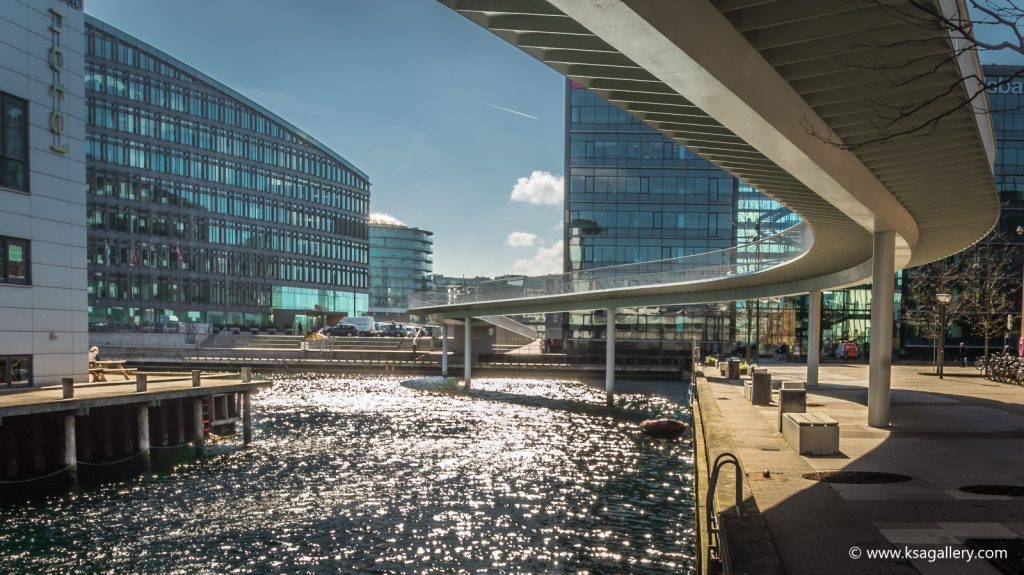 This one is my favorite from that day: the underneath of a new elevated bike path among modern glass facades. Conditions were difficult for taking pictures with, indeed, harsh shadows and even harsher sun reflections in the water. This was put together from three different shots.
This one is my favorite from that day: the underneath of a new elevated bike path among modern glass facades. Conditions were difficult for taking pictures with, indeed, harsh shadows and even harsher sun reflections in the water. This was put together from three different shots.
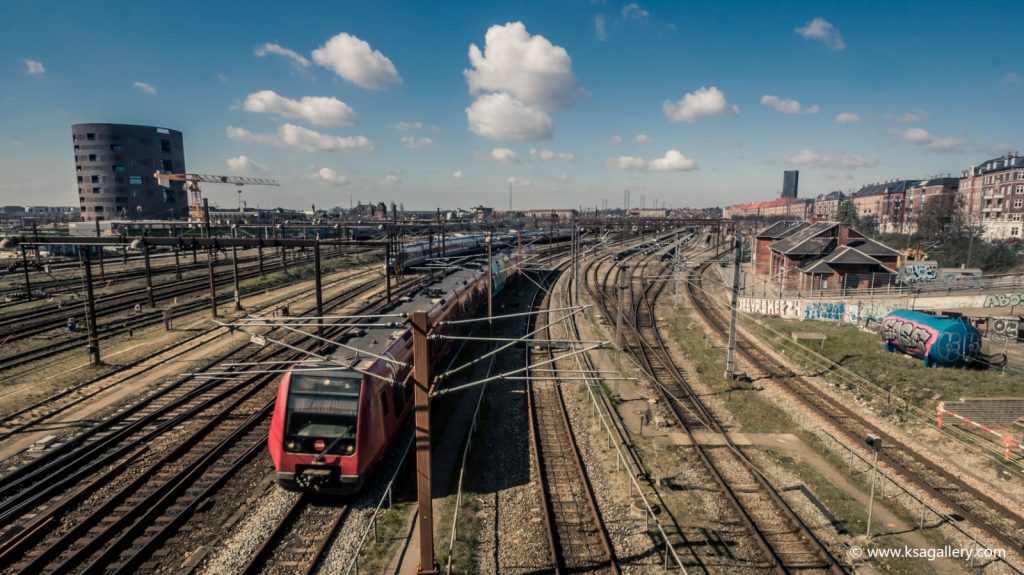 One of my goals for the day was to take pictures of trains. I did take a bunch, but nothing too spectacular. This one was my favorite. I love the wide railroad area near Copenhagen Central Station.
One of my goals for the day was to take pictures of trains. I did take a bunch, but nothing too spectacular. This one was my favorite. I love the wide railroad area near Copenhagen Central Station.
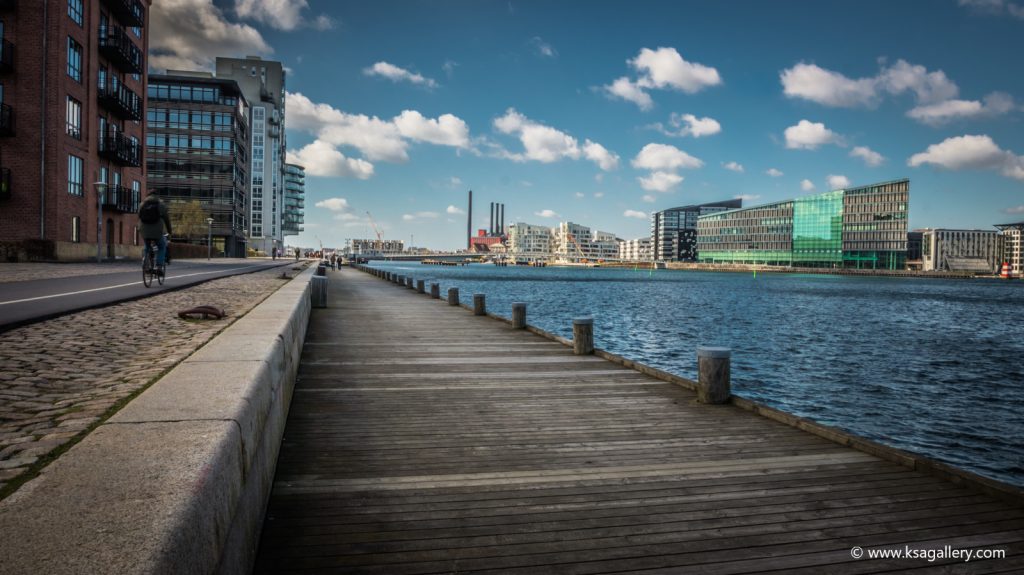 Another revisit of a scene I took with my cell phone more than a year ago that turned out really well. This isn't too shabby either. And yes, while I think this mid-day picture is perfectly fine, I can only imagine how gorgeous that glass facade must look in a beautiful, colorful sunset.
Another revisit of a scene I took with my cell phone more than a year ago that turned out really well. This isn't too shabby either. And yes, while I think this mid-day picture is perfectly fine, I can only imagine how gorgeous that glass facade must look in a beautiful, colorful sunset.
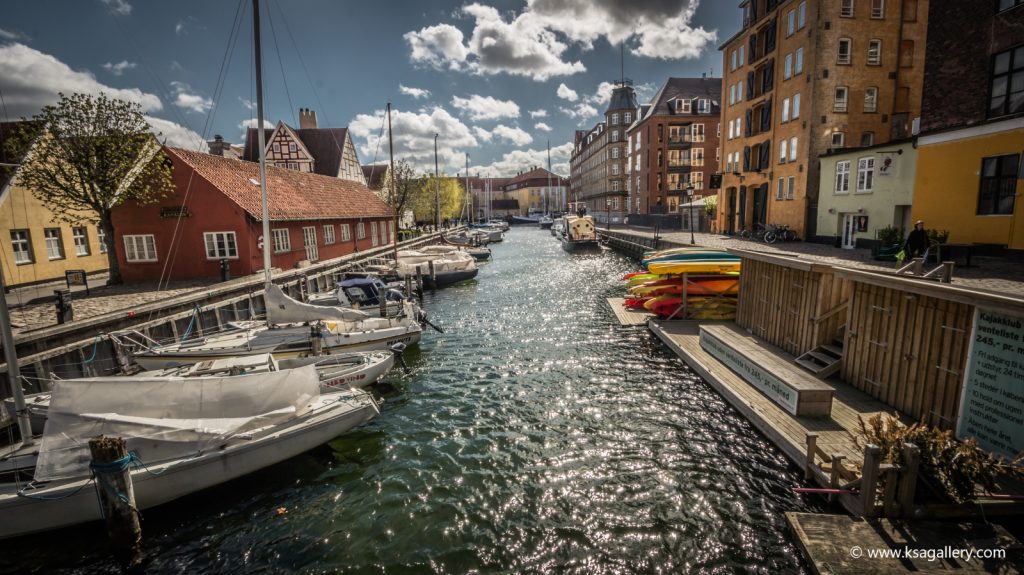 A canal in the part of Copenhagen called Christianshavn. The canals were one of my main objectives of the day, too, but I didn't quite find the right spots. This one turned out okay, but the light definitely was a challenge that again required three different exposures put together to overcome the shadows and the highlights.
A canal in the part of Copenhagen called Christianshavn. The canals were one of my main objectives of the day, too, but I didn't quite find the right spots. This one turned out okay, but the light definitely was a challenge that again required three different exposures put together to overcome the shadows and the highlights.
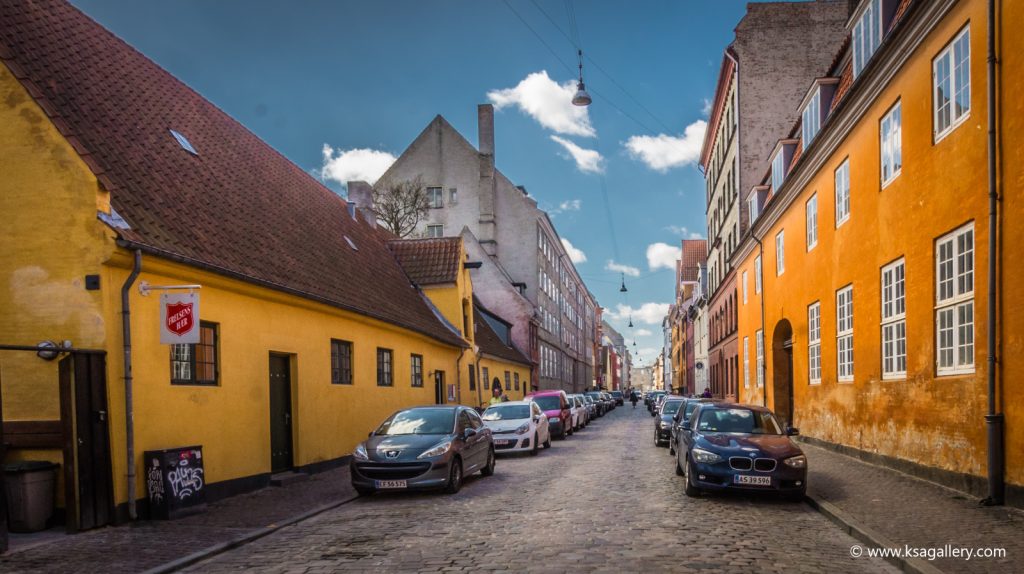 One of the things I realized on that day was that urban photography is often made difficult because of all the cars that are everywhere and that just get in the way of all the interesting buildings and other objects. Here I tried to make them work to my advantage in how the shiny metal contrasts the old buildings.
One of the things I realized on that day was that urban photography is often made difficult because of all the cars that are everywhere and that just get in the way of all the interesting buildings and other objects. Here I tried to make them work to my advantage in how the shiny metal contrasts the old buildings.
Finally, you may ask, where are all the people? Isn't that an important part of taking pictures in the city? Well, maybe. But that's where the landscape photographer in me takes control. In landscape photography, people are usually just in the way. So on that day at least, I avoided places with lots of people. Maybe that will be a challenge for another day.
Six shots from a photo walk in the local neighborhood April 18, 2016. Not many spring colors yet, so I used it to my advantage and did some black and white and low-saturation images. I was quite happy with the result. I think for once I'm just going to let the images speak for themselves.
It was just five months after I got my Sony A33 camera (the one I'm still using today). I really had no clue how to use it. Automatic mode was all I knew. ISO, aperture, and shutter speed? Those were all gibberish to me. So were words like composition and RAW.
So up until then my upgrade from a compact camera to a DSLR hadn't resulted in the expected transformation of my pictures to an array of masterpieces. I probably wouldn't have admitted that back then, just as I have trouble admitting today that I won't be the next Ansel Adams (I'm practically there, right?).
Anyway, so when my friend Brian asked if I was interested in going to Tivoli Gardens for an open-air concert with Danish rock star Michael Falch and that cameras were allowed, I of course said yes. I figured it would be great practice for when Bruce Springsteen would call to make me his official tour photographer.
As for Michael Falch, I can sort of take him or leave him. He plays the kind of no-frills rock that I prefer, and he's made a few pretty decent songs, but not enough to seriously catch my interest. I'm not even going to start talking about how he performed with Bruce Springsteen during the latter's first visit to Copenhagen in 1981, because then we'd stray too far from the topic.
So, to make a long story even longer, that night we found ourselves in the front row in front of the open-air stage inside Tivoli Gardens; and with cameras being perfectly allowed in Tivoli, we were well-equipped and ready for some music and some shooting.
Now, I don't remember if I set my camera to "Automatic with no flash" or "Night Scene". Whatever the case, not even today, with five years of experience, would I have been able to do a manual setting that matched what the camera figured out on its own. And I don't say that often. I usually find that the automatic settings are lacking in one way or another, usually over-exposing the image. But when it came to this low-light-but-lots-of-artificial-light-up-on-the-stage scene, the camera rocked as much as the band.
That night I took in the neighborhood of 200 pictures, and I don't exaggerate when I say that every one of them was a keeper from a technical point of view. And what's more, from an artistic point of view, it may have been 80% of the pictures that were good to excellent. Of course, some of them were very similar, but there was enough variety to make it interesting. It didn't hurt that the show featured several guest artists and thereby offered new exciting motifs on a regular basis.
For that reason, it's been really difficult to choose a limited number of pictures to present here. I did pick a few, but as a bonus I created a slideshow video containing a whole bunch more. Sorry about the length of it, but note that it contains music from the actual show during which the pictures were taken.
I went for another walk yesterday and came across an old favorite subject of mine. That is, I have always seen the photo potential in this old abandoned gate in the middle of the woods, but I never quite got it. Until now. I think.
One of the problems was that it's actually not easy to get in position to take a picture of the gate. You can't get far enough away from it to make it fit in a frame, unless you stand in front of it at a straight angle, which makes it visually rather uninteresting.
The solution, it turned out, was my cell phone. I am really impressed with my cell phone camera's panorama feature that allows you to stitch together nine images on-the-fly to great effect. Still, in order to get a good angle of the gate, I had to back into a bunch of branches, but from there I was able to fire off those nine images, and the phone managed to put hem together seamlessly.
While the above picture is proof to me that it's not always the most expensive camera that takes the best picture in a given situation, I did also take a couple with my full-frame camera that I was happy with. Here's one:
And with that I left the gate to its hopeless struggle of keeping intruders out of someplace that is no longer there, and my own struggle to take a decent picture of it had come to an end.
Whether you live near the Grand Canyon, in a pulsating city, or on the outskirts of a medium sized Danish castle town, if you go for a walk, there are only so many new and interesting things to look at. At some point everything around you just takes on a familiarity that makes you not even see the most attractive features. The gorgeous Frederiksborg Castle in the middle of my town that makes tourists drop their jaw... I often drive by it and don't even look in its direction.
So last Sunday when I grabbed my camera and went for a much needed walk in the neighborhood, I had more hopes for the spring air than I did for the pictures I would bring home.
But it turns out that if you are really tuned in on your surroundings, it doesn't matter that you have taken the same walk a dozen times. Suddenly you notice things that you never noticed before, or that you didn't see the photo potential in. Or maybe the light somehow makes things look different. Or the horses on that pasture suddenly want to come over and pose for you like they never did the other 10 times you walked by.
Even a church and a graveyard that I have often passed by without even slowing down, on that Sunday made me stop and see several objects and angles that I just had to go shoot, and with a pretty good result.
By the end of the walk, I felt so inspired that I even posed for a selfie in that beautiful old alley that I have taken tons of pictures of before, but never quite like this.
Here are the rest of the pictures from that day that are worth sharing: [gallery_bank type="images" format="blog" title="false" desc="false" display="all" sort_by="date" special_effect="grayscale" animation_effect="fadeIn" album_title="false" album_id="6"]